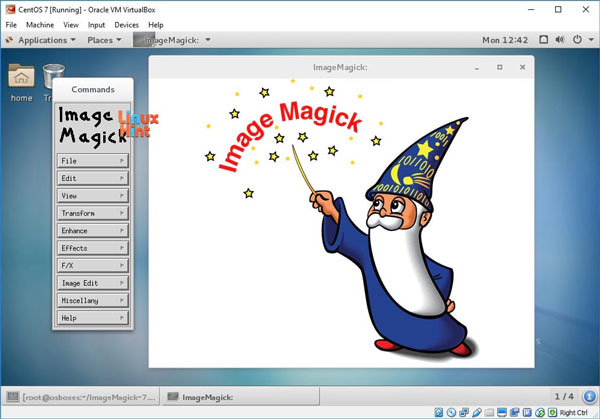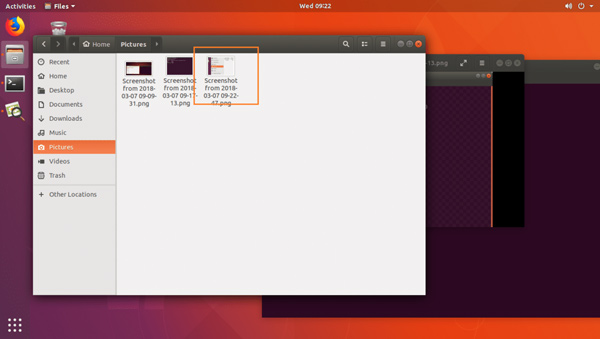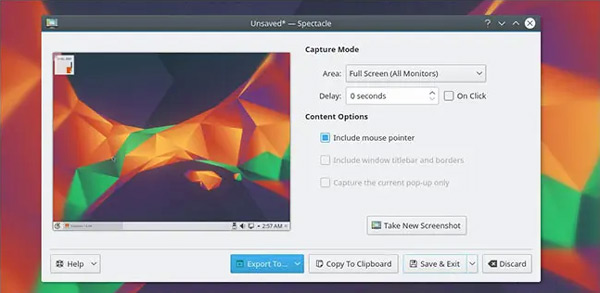Snipping Tools for Linux Review, Here are the 8 Best Apps You Should Know
Is there a built-in snipping tool for Linux to grab a portion of the screen just like Windows and Mac? Yes. But instead of the default Print Screen button, you have to use the key combinations to capture the photos. Moreover, you have to copy the screenshots to another photo editor to edit the snapshots, resize the photos, and more. What are the best alternatives? Just learn more details from the Linux snipping tool review and choose the desired program as your requirements.
Guide List
How to Use the Default Snipping Tool on Linux 7 Best Snipping Tools for Linux to Take Screenshots Bonus Tips: The Ultimate Snipping Tool for Windows/Mac FAQs about the Snipping Tools on LinuxHow to Use the Default Snipping Tool on Linux
Just as mentioned, you can simply press the "PrtScn" key on the keyboard to capture a screenshot of the entire screen and the captured image is saved to the Pictures directory. Here are the lists of key combinations of the default snipping tool for Linux.
Shift + PrtScn: Take a screenshot for a specific region and save it to the Pictures folder.
Alt + PrtScn: Capture a screenshot of the active window and save it to the Pictures folder.
Shift + Ctrl + PrtScn: Select and capture a specific region and copies it to the clipboard.
Ctrl + Alt + PrtScn: Copies the screenshot of the active app window to the clipboard.
Ctrl + PrtScn: Copy the screenshot to the clipboard.Taking screenshots is simple with default keyboard shortcuts in Linux. But it’s not convenient to do annotations or some other fancy editings.
7 Best Snipping Tools for Linux to Take Screenshots
Top 1: Flameshot
Flameshot is an actively maintained screenshot tool for Linux Ubuntu to add annotate, mark, blur, and upload to Imgur. It enables you to customize the interface color, button selection, keyboard shortcuts, and more.
Pros
Change the colors, sizes, and widths of all the elements.
Provide a pin screen to capture a long document.
Move the screenshot area and change its dimensions.
Cons
Cannot add text or do the screen recording.
Do not support a delay for a region shoot

Top 2: Shutter
Shutter is another free and open-source screenshot tool for all major Linux distributions. There are various features to take screenshots, edit the captured image, and upload them to some image-hosting sites.
Pros
Hide private content by pixelating the screenshots.
Spruce up a completely clear image easily.
Modify the taken screenshot and add some effects.
Cons
Do not provide a screen video recording feature.
Have not been updated for a long time.

Top 3: ImageMagick
ImageMagick is more than a Linux snipping tool, it also enables you to edit, convert and display vector image files in more than 200 image formats. It is more like an image editor that happens to support screen capture.
Pros
Capture the entire screen, active window, or selected portion.
Provide abundant abilities with a rich set of commands.
Make image rendering with a native X-window GUI easily.
Cons
Difficult to manage the snipping tool with command lines.
Assume non-linear sRGB for images without a profile

Top 4: GMIP
GMIP is a comprehensive and open-source image editor Linux, which you can resize, retouch and edit the photos. Of course, you can use the program as a Linux snipping tool to take snapshots within clicks.
Pros
Take screenshots of the complete window or the selected area.
Provide editing features to scale, add filters, correct color, etc.
Expand more other features for taking screenshots on Linux.
Cons
Hard to manage the layers and typography for beginners.
Provide limited features for taking snapshots or recordings.

Top 5: Scrot
Scrot is a lightweight and powerful screen capture tool on Linux for taking screenshots of the desktop, terminal, or a specific window. It allows you to add text, lines, arrows, and drawing to the screenshot.
Pros
Allow you to generate a thumbnail of the screenshot.
Execute various operations on saved snapshots easily.
Display countdown while using the delay option for snipping.
Cons
Provide limited features to take snapshots on Linux
Need to check the tutorial for snipping or editing.
Top 6: Gnome
Gnome screen capture is the default snipping tool for Linux Gnome. It’s a simple GUI application that supports you to take a screenshot of either the whole screen or part of the screen as you like.
Pros
Take snapshots, capture audio, and record screen video.
Set the bit rate, encoding format, or any other setting.
Provide a series of toolkits to record and edit the photos.
Cons
Cannot edit or share the captured image with this tool.
Compatible with the limited Linux operating system only.

Top 7: Spectacle
Spectacle is another incredibly simple Linux screenshot tool that supports capturing any area of the screen. The captured images can be saved and sent to other applications for manipulation.
Pros
Contain the essential tools for editing the snapshots.
Provide a delay option for capturing the screenshots.
Hide the mouse cursor on the screenshot.
Cons
Lack of some essential editing and sharing options.
It is quite minimal without the annotation tools.

Bonus Tips: The Ultimate Snipping Tool for Windows/Mac
What is the best snipping tool for Windows and Mac, such as taking Discord screenshots? When you need to capture screenshots, add annotation, apply schedule recording, and more, AnyRec Screen Recorder is a versatile way to capture the desired files. Moreover, you can also adjust the photo format and file quality, tweak the capture area, apply the delay countdown, and manage the screenshot easily.

Capture screenshots for full screen, active window, customize a frame, etc.
Adjust the photo quality, photo format, and other parameters easily.
Provide the editing tools and annotation features to polish the snapshots.
Manage the screenshots, save to a local drive and share them with others.
100% Secure
100% Secure
FAQs about the Snipping Tools on Linux
-
Where is the screenshot saved in Linux?
The captured snapshots are automatically saved in the Pictures folder in your home folder with a file name beginning with Screenshot. If you do not have a Pictures folder, the images will be saved in your home folder or the desktop instead.
-
How to install the snipping tools for Linux?
When you need to install the Linux snipping tool, you can enter the following code into a terminal window, sudo add-apt-repository [destination]/[program] sudo apt update sudo apt install [program]
-
How to capture a screenshot in high quality in Linux?
To capture a screenshot in Linux, you can check whether the Linux Snipping
Conclusion
We have listed some snipping tools on Linux that you can get for your daily screen capture needs. You may choose the desired snipping app according to your preference. If you need to find the best snipping tool for Windows and Mac, AnyRec Screen Recorder is always the recommended snipping tool you should not miss.
